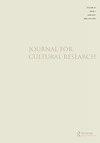Durkheim meets Cthulhu: the impure sacred in H. P. Lovecraft
IF 0.6
Q1 CULTURAL STUDIES
引用次数: 1
Abstract
ABSTRACT American writer Howard Phillips Lovecraft (1890–1937) is in vogue more than ever before. His creation – the Cthulhu mythos – is widely referenced across popular culture today. We can rightly speak of this as Lovecraft-mania, which is all the more unexpected considering Lovecraft’s personal details: he never achieved job stability in his life, let alone fame, while he was convinced that humanity had no value when seen in relation with the whole universe. This article examines what lies at the source of Lovecraft-mania as cultural phenomenon. By relying on Durkheim’s theory of religion, the article underlines the elements in Lovecraft’s writings marking a distinction between profane and sacred – not the pure sacred in this case, but the impure (transgressive) sacred. Through his stories, Lovecraft transports his readers from a profane time-space to a sacred time-space. It is this experience of transcendence that accounts for the pleasure (as effervescence) one finds in reading Lovecraft. Following this logic, we can add that the famous monsters imagined by Lovecraft – Cthulhu, Yog-Sothoth, Azathoth and Nyarlathotep to name a few – do not stand as symbols of Lovecraft’s own racism, but as celebrated religious totems in a Durkheimian sense.涂尔干与克图胡相遇:洛夫克拉夫特笔下的不纯神圣
摘要美国作家霍华德·菲利普斯·洛夫克拉夫特(1890–1937)比以往任何时候都更受欢迎。他的创作——克图胡神话——在当今流行文化中被广泛引用。我们可以正确地将其称为洛夫克拉夫特狂热,考虑到洛夫克拉夫特的个人细节,这就更加出乎意料了:他一生中从未获得过稳定的工作,更不用说名声了,而他确信人类在与整个宇宙的关系中没有价值。这篇文章探讨了洛夫克拉夫特狂热作为一种文化现象的根源。这篇文章以涂尔干的宗教理论为基础,强调了洛夫克拉夫特作品中标志着亵渎和神圣之间区别的元素——在这种情况下不是纯粹的神圣,而是不纯的(越轨的)神圣。通过他的故事,洛夫克拉夫特将他的读者从一个亵渎的时空带到了一个神圣的时空。正是这种超越的体验解释了一个人在阅读洛夫克拉夫特时所发现的快乐(如兴奋)。根据这一逻辑,我们可以补充一点,洛夫克拉夫特想象中的著名怪物——Cthulhu、Yog Sothoth、Azathoth和Nyarlatothep等等——并不是洛夫克拉夫特自己种族主义的象征,而是涂尔干意义上著名的宗教图腾。
本文章由计算机程序翻译,如有差异,请以英文原文为准。
求助全文
约1分钟内获得全文
求助全文
来源期刊

Journal for Cultural Research
CULTURAL STUDIES-
CiteScore
1.40
自引率
0.00%
发文量
23
期刊介绍:
JouJournal for Cultural Research is an international journal, based in Lancaster University"s Institute for Cultural Research. It is interested in essays concerned with the conjuncture between culture and the many domains and practices in relation to which it is usually defined, including, for example, media, politics, technology, economics, society, art and the sacred. Culture is no longer, if it ever was, singular. It denotes a shifting multiplicity of signifying practices and value systems that provide a potentially infinite resource of academic critique, investigation and ethnographic or market research into cultural difference, cultural autonomy, cultural emancipation and the cultural aspects of power.
 求助内容:
求助内容: 应助结果提醒方式:
应助结果提醒方式:


